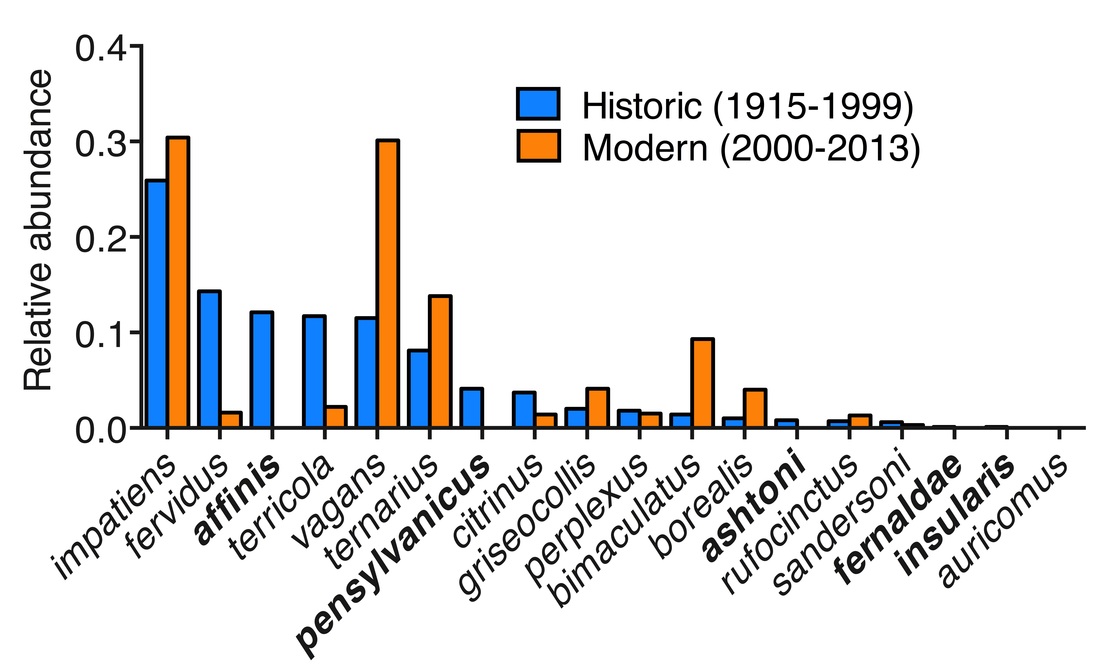|
With co-authors at the Vermont Center for Ecostudies (VCE) I'm writing a manuscript on changes in bumble bee species distribution in Vermont over the last century. We compared historic (<1999) museum specimen data to modern (2000-2014) collections, including a two year citizen science project in which VCE volunteers collected more than 10,000 new records of bumble bee species distribution around the state.
What did we find? Eighteen species of bumble bee are native to Vermont, and five of these, shown in bold in the figure below, have apparently been extirpated. A number of other species have declined in relative abundance between the two periods also. (Relative abundance is a coarse metric for comparison of a single species' contribution to a larger dataset.) For example, Bombus fervidus and B. terricola, important pollinators of wild and cultivated plants in our area, have greatly declined in relative abundance between the two time periods. Others, such as B. vagans, are much more common now than in the past, but we do not know the degree to which these species have assumed the ecological niches of those we have lost. This project allowed species status assessments that contributed to listing of two species as Endangered in Vermont, and another as Threatened. Much more on this project to come!
3 Comments
Leif Richardson
1/7/2021 11:16:30 am
Thanks for your interest Ryan. You can find a link to the publication that resulted from this work on the "publications" tab of this site.
Reply
Leave a Reply. |
AuthorEcologist at UVM's Gund Institute for Ecological Economics. Posts about plant-insect interactions, bees, parasites and life. Archives
March 2016
Categories |

 RSS Feed
RSS Feed
